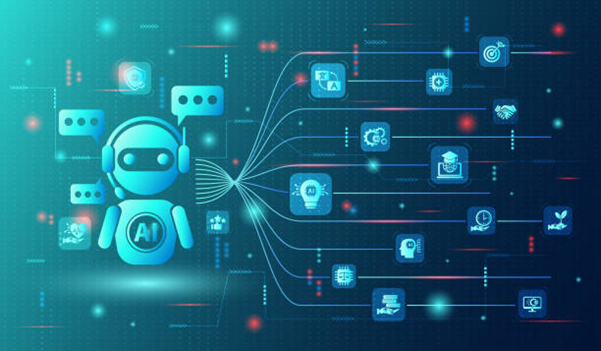
What if telecom networks could think, analyze, and act without human intervention? Autonomous networks are no longer just a vision—they are becoming a necessity in today’s hyper-connected world. As telecom evolves, one technology stands out as a game-changer: Agentic AI. By enabling networks to make real-time decisions across multivendor ecosystems, Agentic AI is accelerating the industry’s transformation toward full autonomy.
The Promise of Autonomous Networks in Telecom
Autonomous networks represent the pinnacle of telecom automation, offering intelligent, real-time decision-making across the network lifecycle—from planning to operations. At Level 5 (L5) autonomy, a telecom network becomes a self-driving entity requiring minimal human intervention. This transformation enhances efficiency, cuts operational costs (OPEX), and significantly improves customer experience through proactive service management.
The autonomous networks market is growing rapidly, projected to reach $17.5 billion by 2029, with a CAGR of 20.1 percent. However, despite this momentum, 80% of telcos remain at Level 2 autonomy, hindered by legacy systems, siloed technology domains, and poor-quality data. The breakthrough lies in adopting specialized technologies to overcome these challenges.
Agentic AI—The Brain Behind Smarter Networks
Agentic AI serves as the orchestrator integrating diverse components of an autonomous network. It connects specialized AI models from different network domains to enable cohesive, real-time decision-making. With Agentic AI, networks evolve from being reactive to predictive, unlocking capabilities such as self-healing, self-optimization, and agile service provisioning.
As per a recent analyst report, agentic AI is set to grow to a market size of 48.5 billion USD by 2032 with a CAGR of 19.4 percent.
Breaking Down the Use Cases for Agentic AI
According to another study, in 2024, US was a leader in Agentic AI adoption by taking more than 39.6 percent of the global market share. It is also poised to grow higher with a healthy CAGR of 42.5 percent over next ten years.
To fully harness the potential of Agentic AI, it must be deployed thoughtfully across the lifecycle of a network. Here’s how it can be applied in key use cases:
1. On-Demand Network Planning & Design
Traditional network planning relies on manual or semi-automated processes that struggle to keep pace with demand. Agentic AI enables predictive, real-time planning by integrating specialized agents for virtual resource planning and infrastructure design.
2. Real-Time Network Build
While physical infrastructure remains essential, autonomous networks require dynamic, real-time adjustments to virtual nodes and configurations. Agentic AI leverages generative AI to determine optimal paths, perform intelligent routing, and generate configuration data instantly.
3. Digital Twin for Network Change Management
Change management remains one of telecom’s biggest challenges. Agentic AI enables real-time digital twins, replicating the network’s current state to assess proposed changes’ impact.
4. Dynamic Network Service Provisioning
Agentic AI automates the traditionally static service provisioning process. Activities like service creation, configuration, and activation occur in real time, enabling telcos to deploy services faster.
5. Closed-Loop Assurance and Zero-Touch Operations
The holy grail of autonomous networks lies in their ability to self-heal and self-optimise. Agentic AI integrates fault correlation, impact analysis, root cause identification, and action planning to create closed-loop systems—networks that can fix issues without human intervention.
Tackling Industry Hurdles with Agentic AI
The road to full autonomy isn’t without its challenges. Here’s how Agentic AI addresses some of the key hurdles faced by telcos:
- Integration Into Legacy Systems: Agentic AI enables interoperability across multivendor ecosystems by harmonizing intelligence from diverse systems. This allows telcos to upgrade incrementally, avoiding costly rip-and-replace strategies.
- Workforce Adaptation and Resistance: Transitioning to autonomous networks requires upskilling employees. Agentic AI’s granular automation balances human oversight with machine-led operations, gradually introducing autonomy.
- Data Quality and Security: Agentic AI’s federated architecture supports real-time data analysis while ensuring stringent data governance, maintaining quality and security across complex, multi-stakeholder ecosystems.
- Regulatory and Compliance Challenges: The telecom industry requires updated frameworks to accommodate autonomous systems. Collaborative efforts, such as TM Forum’s work on standardizing intent-driven interfaces, are paving the way.
A Path to Ecosystem Collaboration
The future of telecom lies in deeper ecosystem collaboration. With networks increasingly dependent on multivendor components and AI models, the Linux Foundation’s networking initiatives and collaborations through TM Forum are paving the way for unified frameworks.
Agentic AI bridges vendor-specific AI models, enabling cross-domain analysis and ecosystem-wide collaboration.
Why Agentic AI Is the Answer
Autonomous networks are rapidly reshaping telecom, and Agentic AI is the catalyst for this transformation. Research indicates that IT and telecom sectors lead Agentic AI adoption, holding 32.6% of the market share.
By integrating specialized AI functions, enabling smart orchestration, and providing actionable insights, Agentic AI is not just closing the gap to full autonomy—it is creating a new paradigm for the telecom industry.
The benefits are clear. Agentic AI can achieve:
- Improved SLA adherence
- 20–30% OPEX savings
- Rapid service deployment and enhanced customer experience
As the industry accelerates toward a future of autonomous networks, Agentic AI stands as the driving force making this vision a reality.





